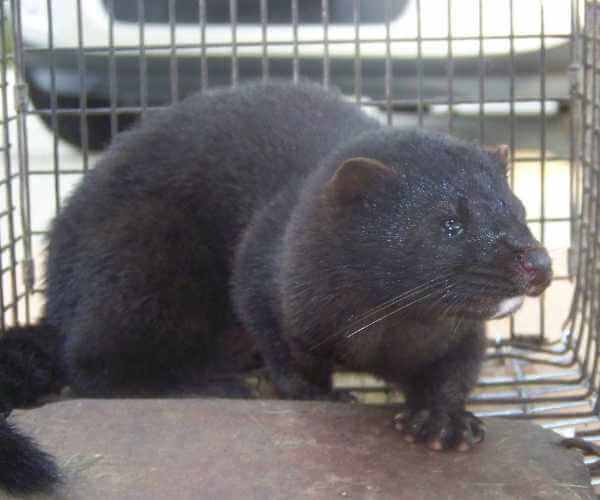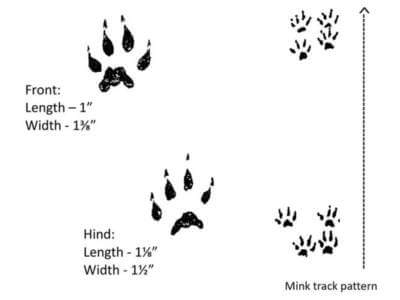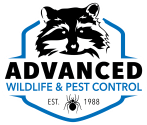
What Does a Mink Look Like?
Mink are semi-aquatic mammals in the Mustelidae family, which includes weasels, otters, ferrets, and badgers. They have long, slender bodies, small ears, and short legs. Mink are larger than weasels, ranging from 1.5 to 2.5 inches long and weighing between 2 and 3 pounds. They have dark brown to reddish fur with a white chin patch, and their tails are tipped with black fur.
Behavior & Habits
Mink are nocturnal, but they are sometimes seen during the day. They are solitary animals except when the females are raising their young. Mink are excellent swimmers and climbers. For their size, mink are quite aggressive and are capable of killing much larger animals. They have a very strong musk that they spray from their anal glands to mark their territories.

Professional Mink Removal in Milwaukee, WI
Mink will take poultry and fish if they can gain access to them, sometimes killing many more chickens, ducks, and koi than they can eat. A single mink can clean out your entire koi pond or chicken coop overnight. Advanced Wildlife and Pest Control provides professional mink trapping and removal services in Milwaukee and southeastern Wisconsin. Our certified wildlife specialists humanely trap, remove, and exclude nuisance minks from your property.

Mink FAQs
Frequently Asked Questions
What do mink eat?
Mink are carnivores that mainly prey on muskrats, rabbits, mice, chipmunks, fish, waterfowl, and frogs. Mink are aggressive and will prey on much larger animals. They will also attack chicken coops and koi ponds.
Where do mink live?
Mink live on the shores of rivers, streams, lakes, ponds, and marshes. They often use burrows dug by muskrats. They will also live in brush or rock piles.
When do mink have babies?
Mink mate from January to March. Their young are typically born in April or May. They have one litter per year, with three to six kits. The young are weaned when they are five to six weeks old and will stay with the female until late summer.
What does mink poop look like?
Mink scat is about three inches long and resembles a braided rope. It may contain small bones, fur, feathers, crayfish parts, or fish bones. They often leave their scat on or near rocks and logs.
How long do mink live?
The average lifespan of a mink in the wild is about 3 to 4 years. Mink have a few predators, including coyotes, foxes, bobcats, and fishers.
What do mink tracks look like?
Mink tracks are one to two inches in length and width and consist of five toes on each paw. However, the tracks may only show four toes. Claw marks are usually visible in the tracks.

Illustration by Dan Goodman
